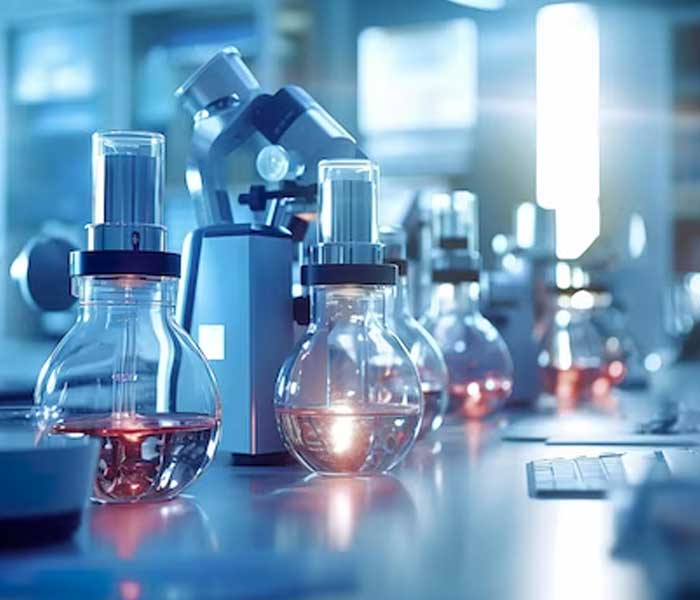
Laboratory Chemicals
Laboratory chemicals are a critical component of scientific research, testing, and analysis across various disciplines. Here's an overview of laboratory chemicals:
Definition: Laboratory chemicals, also known as reagents or laboratory reagents, are substances used in laboratory settings for scientific experimentation, analysis, and research.
-
Tocopherol (Vitamin E)

Description
Tocopherol, commonly known as Vitamin E, is a fat-soluble antioxidant that protects cells from oxidative damage. It is widely used in cosmetics, food, and pharmaceuticals for its anti-aging and skin-nourishing properties.
Raw Materials
- Plant oils (e.g., soybean, sunflower, wheat germ oil)
- Synthetic sources (tocopherol acetate)
Technical Specs
- Formula: C₂₉H₄₆O₂
- Purity: ≥ 95%
- Appearance: Yellow to brown viscous liquid
- Melting Point: 2–4°C (for d-alpha-tocopherol)
Applications
- Cosmetics (moisturizers, anti-aging creams)
- Food (preservative, antioxidant)
- Pharmaceuticals (supplements)
- Skincare (wound healing, scar prevention)
Used In
Cosmetics, Pharmaceuticals, Food, Personal Care
-
Sodium Bicarbonate

Description
Sodium Bicarbonate, also known as baking soda, is a white, crystalline powder that is commonly used as a leavening agent in baking, as well as in cleaning products and as an antacid.
Raw Materials
- Sodium carbonate (soda ash)
- Carbon dioxide
Technical Specs
- Formula: NaHCO₃
- Density: 2.20 g/cm³
- Melting Point: 50°C (decomposes)
- Solubility: Soluble in water
Applications
- Food (leavening agent in baking)
- Pharmaceuticals (antacid, mouthwash)
- Household cleaning (deodorizer, stain remover)
- Fire extinguishers (in powder form)
Used In
Food, Pharmaceuticals, Household, Cleaning
Applications:
-
Used in various scientific disciplines: chemistry, biology, environmental science, etc.
-
Essential for sample preparation, analysis, synthesis, and characterization.
-
Employed in academic and industrial settings for research, development, quality control, diagnostics, and regulatory testing.
-
Drive advancements in scientific knowledge, technology, and product safety.


